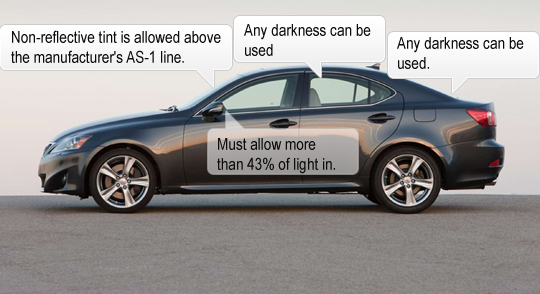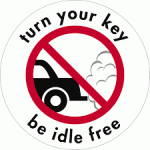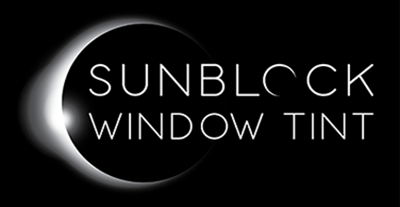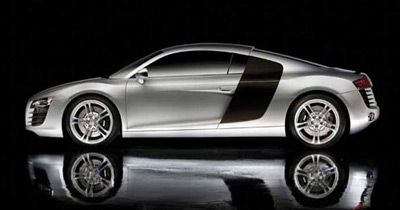
The Case for Updating Utah’s Window Tint Laws
I Started Sunblock Window Tint back in 2012 and since that day one of the biggest complaints I hear from customers is, “Why doesn’t Utah let you go darker on the front windows?” Obviously referring to the darkness of the tint allowed on the front two windows of your vehicle.
Utah law states.
(1) Except as provided in Subsections (2)…., a person may not operate a motor vehicle with:
(a) a windshield that allows less than 70% light transmittance;
(b) a front side window that allows less than 43% light transmittance;
(2) Nontransparent materials may be used:
(a) along the top edge of the windshield if the materials do not extend downward more than four inches from the top edge of the windshield or beyond the AS-1 line whichever is lowest;
The Darkness of window film is measured by Visible Light Transmission (VLT). it is a measurement of how much light passes through the window film.
in regards to tint laws, some states base their laws on the VLT of the film and some states like Utah base their laws on the Net VLT, which is how much light passes through the combined glass + window film.
In summary this means that in Utah your windshield can have no tint, your front driver and passenger glass combined with tint must allow 43% of light to pass through the window, and that you can have a strip of tint at the top of your windshield that comes down to the tiny mark on you windshield that says AS-1, if your windshield doesn’t have a mark it can only come downs 4 inches from the top edge of the windshield.
So What are the problems with these points in Utah’s tint law?
I’ll address this speaking as a Professional Window Tinter and as a consumer who lives in Utah.
There are two purposes of window tint. One is form and the other is function.
Many people like to tint the windows on their vehicles because they like the way it changes the look of their vehicle. Adding window tint to your car makes it look like a whole new vehicle, sexy and sleek.
Then there is function. There are actually two functional reason someone would want to tint the windows on their car.
Privacy & Heat reduction.
For some customers aesthetics and privacy are all they pay attention to. I have actually had customers say, ”I didn’t realize tint blocked heat too” as I was explaining the benefits of each option to them. But it is true and it’s actually the main purpose of of window film.
Utah is a desert and it gets HOT. We need to take protective precautions, we are reminded of this every year via television & radio commercials.
We have also seen a large push regarding air quality with the “turn your key, be idle free” movement. Salt Lake City has even enacted an Idle Free Ordinance with fines up to $125 for unnecessary vehicle idling over 2 minutes.
Think for a moment about the reason someone might choose not to turn off their car while they are waiting to pick up their kids from school or while they are waiting in line at the drive through.
Think about this scenario in the middle of a Utah August day; It’s too BLOODY hot to turn off your car and go idle free.
Window tint film can help with this.
As mentioned before, window tinting film helps reject heat, the darker the film the more solar energy the film rejects. 31 states have laws that allow front windows to be tinted darker than Utah does including every single state immediately adjacent to Utah
Idaho: 35%
Wyoming: 28%
Colorado: 27
New Mexico: 20%
Arizona: 33%
Nevada: 35%
Depending on brand and product line the difference in solar energy rejection between the films currently used for front windows in Utah can be anywhere between 10-15% that is a noticeable difference. A difference enough that someone might now be willing to go idle free due to the fact that the time it takes for their car to heat up is increased and the sun hitting the side of their face isn’t as scorching.
My proposal is not that Utah joins with New Mexico and allow for 20% VLT, but that we allow for the Use of a 35% film. The use of a 35% film gives the benefit of additional protection from the sun without dramatically decreasing the ability of the driver to see or be seen.
I’ll now put on my Window Tinter hat as a make my next suggestion.
I deal with many customers who come to see me because they failed their safety inspection due to their tint being too dark. Usually these customers have just moved to Utah from a state which allows the use of darker window tinting film or they hsve recently bought a car (which likely came from another state). Upon having their first safety inspection they learned that their tint is too dark and that it must be removed or removed and replaced to meet state laws.
You would think that this is no biggie, but enter Utah’s use of Net VLT.
Recently I have had an increasing amount of customers calling and saying that they just returned to the inspection station to have their windows re tested and that they are being told that they are still too dark. Usually they are metering some where between 40% & 38%
Utah’s law allows for a 2% variance which means you can technically be as dark as 41% VLT
So whats the problem?
There isn’t just a single problem. There are multiple problems.
1. Auto manufactures are shipping vehicles from the factory with windows darker than they used to be. By Federal Law front windows can be as dark as 70% on a newly manufactured vehicle.
Utah’s window tint laws were enacted clear back in 1994. Back then cars came from the factory with glass clearer than 80% VLT so there problems we see today didn’t exist back then.
I see brand new cars with VLTs as light as 81% and as dark as 70% (remember Utah uses Net VLT, so the darker the factory glass the darker the Net VLT)
2. A 50% film is what what should be used to meet Utah tint law. The problem here is that window tint VLTs are more similar to the “Classes” used by manufactures of flat screen TV’s. Chances are your 50″ TV doesn’t actually measure 50″. Your TV could be 49″, 49.5″ 50″ 50.5″ possibly even 51″, it’s still considered a 50″(class) TV.
In similar fashion window tint manufactures market a 50% VLT film but it’s true VLT could actually be anywhere from 48% – 55% depending on manufacturer and product line.
3.Even Window film manufactures allow for variances. Due to the manufacturing process it is possible that the film that shows up at my shop could actually be a little lighter or a little darker tg
Han the stated VLT, but usually no more than +/- 2%.
4. The tint meters that are used aren’t always accurate.
After I had a customer call to tell me that they still did not pass their safety inspection after I had removed and replaced their film. I grabbed my meter and drove to the inspection station that had failed them. I asked if I could compare their meter to mine. We used the same brand and model meter (Theirs was a noticeably older and more frequently used than mine). We placed both meters on the same glass and their meter measured darker than mine by 3%, we switched batteries putting mine in their meter and theirs in to mine. same result.
I concluded that the age of their unit could be the issue.
in addition the age of the batteries in the unit affect its accuracy.
Did you catch all of that? There’s the VLT of the glass, the VLT of the film, the possibility that the film delivered to me is slightly darker than what is on my manufactures spec sheet, and the fact that the meters used to pass and fail us aren’t exactly accurate.
put that all together and weather you pass or fail is now bordering on luck.
My suggested solution for this is that Utah either move from Net VLT to Film VLT or that they increase the variance to 5% from 2%. The better solution would be to go to Film VLT. This would eliminate all of these unrelated variables.
Window tinting can still be part of the safety inspection. Technicians would simply need to understand all of the variables involved, they should be trained to know the “reasonable” VLT range legal tinting would fall into so that they can make judgments based on the spirit of the law and not the “percentage” written in the law.
Next on the list is the law limiting how low the strip at the top of your windshield can be. It seems as if there is no rhyme or reason for the way it is written.
Window tint can come down to the AS-1 line of as low as 4″ in no AS-1 line is present.
What is the AS-1 line? AS stands for American Standard. The AS marking is followed by either 1,2,or3 which indicates the location on the car it can be use. AS1 glass has at least 70% VLT, has the best optical quality. It is the only glass that can be used on the front windshield. The AS-1 line on your windshield indicates the point on your windshield where the were the glass begins to 70% VLT all the way across.
Here is why using the AS-1 line to determine the law makes zero sense.
The AS-1 line is in a different position on every vehicle. On a 2015 Ford F-250 the AS-1 line is approximately 2.5″ down from black border at the upper part of the windshield. On a 2015 Ford F-150 it is about 5.5″ inched down form the top. The AS-1 line extends down approximately 8″ inches on a Nissan Maxima. So if it is safe to have a strip of tint come down 8″ on a why is it unsafe to go more than 2.5″ on an F-250?
if there is no AS-1 line the laws saws 4″ is the limit. Again where is the sense here. further more the says 4″ from the top of the windshield. the glass on the out side extends further up the vehicle than you notice from the inside so if a tinter actually was to abide by this you could have strips that are as narrow as 1″ (thankfully most tinters I know use common sense and measure from the black boarder.)
The the true purpose of a Windshield Strip is to block glare. A 2″ tint strip serves no purpose. Imagine if your fold down visor was only 2.5″ tall.
Solution; change the law so that the tint strip at the top can extend down from the top boarder to the AS-1 or 6″Line whichever is Lower
Finally, your windshield is the largest window on your vehicle and it lets in the most heat. With recent advances in window film technology, films have been created that allow for the rejection of massive amounts of solar energy while maintaining optical clarity and safety. these films are so clear that most non window tinters would ever realize that there was an after market film applied to windshield.
Although these products are expensive having a law that allowed for films like these to be applied to the windshield would now give people the option and make it even easier for drivers to go idle free and help contribute to cleaner air in Utah
Utah needs to take a look at updating its laws to reflect our climate and our states goals for cleaner air. With regards to cleaner air Window tint has the under valued potential to contribute to the cause.
Authors Note: While gathering information for this article I found that a bill was recently introduced to actually lighten the legal limit for tint in Utah. Please subscribe for additional information regarding this proposed change.

